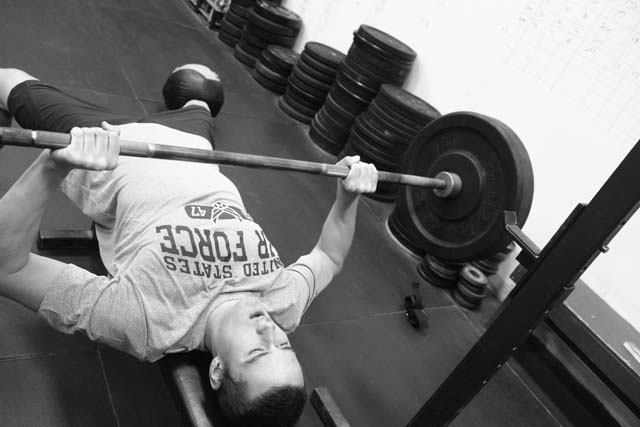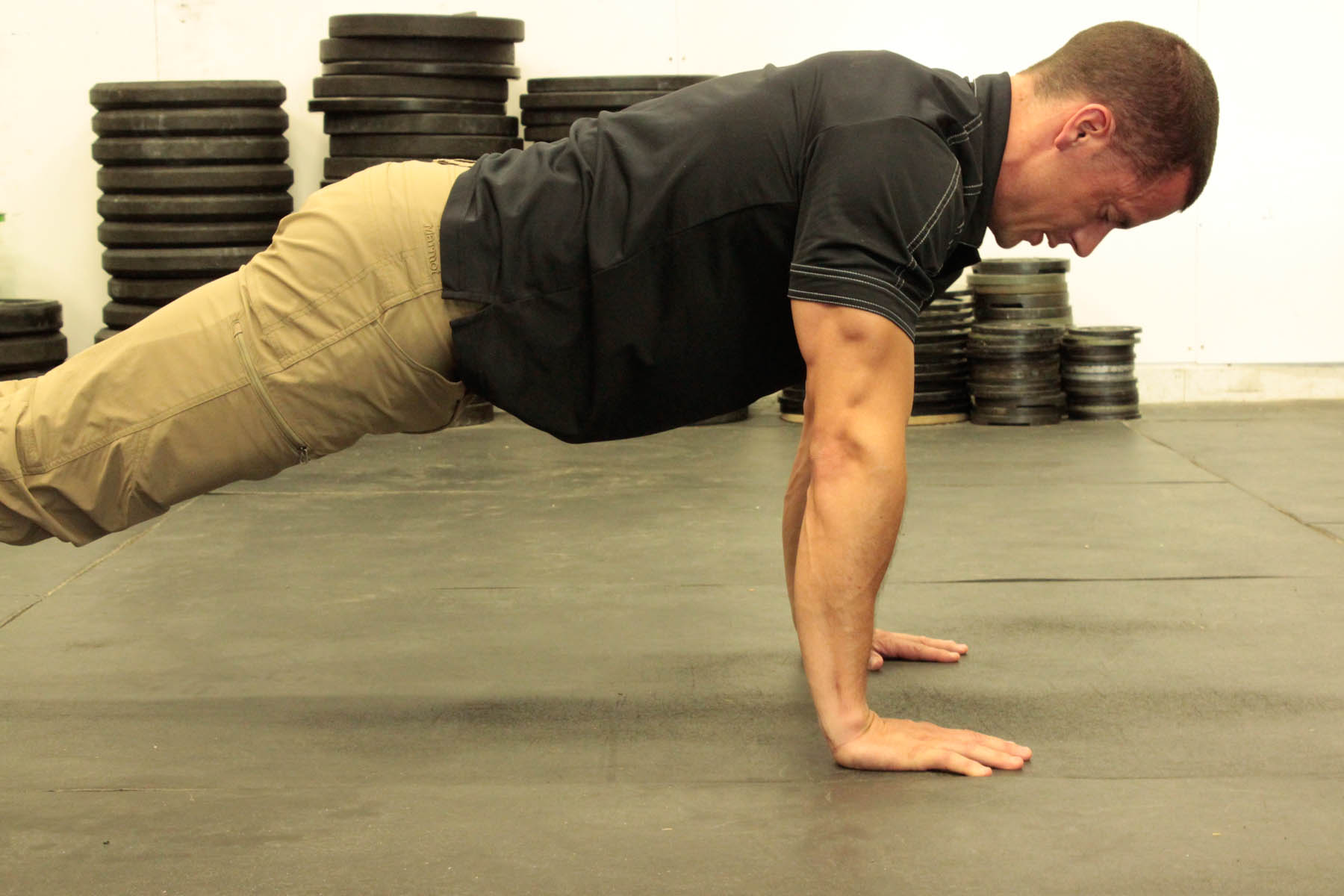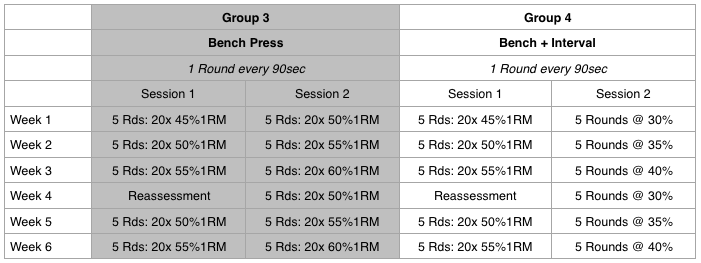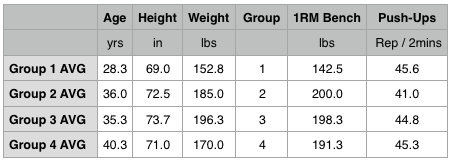By Adam Scott, MS, CSCS
We kicked off the pilot-phase of our study investigating the best way to improve push-ups. The study is very similar to what we did with Pull-Ups during Sping/Summer 2016 – except, obviously, with push-ups. Basically, we designed four push-up training programs and randomly split our lab rats into four groups.
For the next 6 weeks, lab rats will be complete their prescribed push-up training twice per week during their regular training sessions here in Jackson (Operators, LE Officer, and Mountain Base).
For this mini-study, we are looking specifically at a 2-minute maximum repetition push-up test. However, we should point out that there are at least four varieties of basic push-up tests regularly used by tactical professions. And while some of what we learn will likely be generalizable across tests, it is also very likely that each test type will require a slightly different, specific training protocol. Those four tests are:
- 1-minute maximum reps with authorized rest (common in LE tests)
- 2-minute maximum reps with authorized rest (common in Military tests)
- Maximum continuous reps without rest (FBI and others)
- Maximum repetition, cadence-based push-Ups using a metronome – i.e. 50 beats per minute – 25 push-ups per min (common in some F/R tests)
Pre-Test Results
17 local lab rats are participating in the pilot study. There are 11 male participants and 6 female. Male scores ranged from 145# to 315# on the 1RM bench press, and 39 to 100 on the 2-minute push-up test. Female scores ranged from 80# to 145# on the 1RM bench press, and 9 to 35 on the 2-minute push-up test. The averages (per gender) are provided below:
As mentioned above, the lab rats were randomly divided into the 4 groups. Group 1 has five subjects, while Groups 2, 3 and 4 each have four subjects. The group averages are provided below:

Bigger Picture
Obviously, we want to answer the question: “what is the best way to improve push-ups?”, but on a much larger scale, we also want to use this study to expand our research ability. For us, this means tapping into our biggest resource, our online athletes.
As we continue to develop MTI as a research institute we see opportunities to partner with our online athletes on everything from developing study ideas to finding study volunteers, to soliciting analytical support.
Actually, the impetus for this push-up study came from suggestions from two online athletes (a U.S. Naval Officer and FBI Special Agent).
So, in addition to examining our research question we want to use this pilot study to investigate the best ways to tap into our online athlete resource.
We aren’t exactly sure how this will play out, but we are working on a few solutions. First, we need to figure out the best way for athletes to volunteer for studies and receive randomized training assignments. Next, we need to develop a non-burdensome way to collect data from the athletes. And finally, our ultimate goal would be to develop an efficient and effective way to help our athletes conduct their own research.
What’s Next
Our lab rats will continue to work through their push-up pilot-study. By the end of their training, we hope to have most of those online solutions identified. Then it will simply be a matter of getting our online athletes engaged.
Questions, Comments, Feedback? E-mail: coach@mtntactical.com
You Might Also Like MTI’s Push Up Improvement Packet





